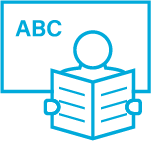


Direct associations emerged between classroom-level adversity (CLA) and controlling instruction (positive), classroom management, and academic instruction (both negative). In addition, CLA was related to 1st grade (G1) literacy (but not mathematics) directly and indirectly via classroom management (negatively) and controlling instruction (positively). There was a negative direct longitudinal association between CLA and 3rd grade (G3) executive functioning, and indirect associations with G3 literacy and mathematics through G1 teaching practices and literacy.
Authors: Tashia Abry, Kristen L. Granger, Crystal I. Bryce, Michelle Taylor, Jodi Swanson, & Robert H. Bradley
Source: Abry, T., Granger, K. L., Bryce, C. I., Taylor, M., Swanson, J., & Bradley, R. H. (2018, May 24). First grade classroom-level adversity: Associations with teaching practices, academic skills, and executive functioning. School Psychology Quarterly. Advance online publication. http://dx.doi.org/10.1037/spq0000235
The authors examined direct and indirect associations between 1st grade (G1) classroom-level adversity (CLA), G1 teaching practices, and student academic skills and executive functioning in G1 and 3rd grade (G3). Direct associations emerged between CLA and controlling instruction (positive), classroom management, and academic instruction (both negative). In addition, CLA was related to G1 literacy (but not mathematics) directly and indirectly via classroom management (negatively) and controlling instruction (positively). There was a negative direct longitudinal association between CLA and G3 executive functioning, and indirect associations with G3 literacy and mathematics through G1 teaching practices and literacy.
Classroom management
Controlling instruction

The study
The present study examined G1 CLA, a classroom-level index of multiple child and family risk factors affecting the student group.
Research questions:
The study participants consisted of 1073 children. Teachers reported CLA. Teachers’ classroom management, controlling instruction, and amount of academic instruction were assessed by trained independent observers. Children’s literacy, mathematic skills, and executive functioning were directly assessed by trained research personnel.

Findings

Implications